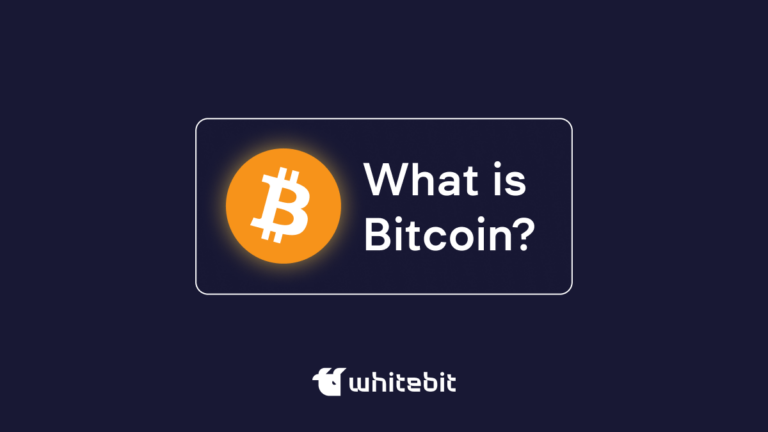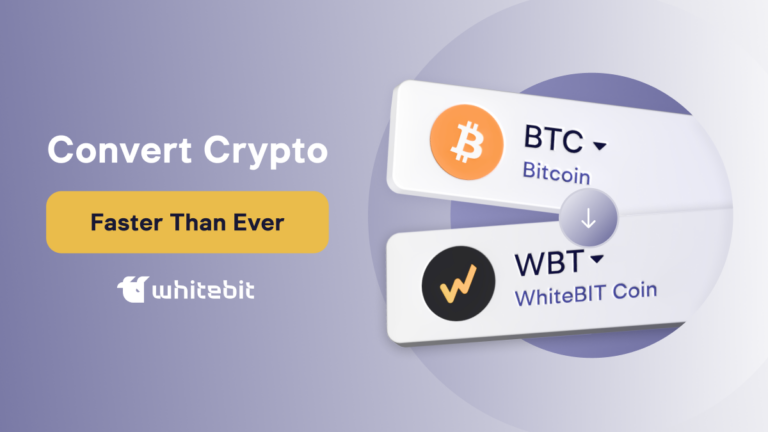Bitcoin vs Ethereum: Understanding the Differences

Content
When it comes to cryptocurrencies, Bitcoin and Ethereum invariably take centre stage. Not only are these two cryptocurrencies popular among investors, but they also serve as the basis for many decentralised solutions. What is better: Bitcoin or Ethereum? How is Ethereum different from Bitcoin? What do these cryptocurrencies have in common? Let’s review in this article.
What is the Difference Between Bitcoin and Ethereum?
Bitcoin (BTC) and Ethereum (ETH) are the two leading cryptocurrencies, each with their own unique characteristics and goals. One of the key differences is programmability: Ethereum offers a Turing-complete programming language that allows for the creation of complex and diverse applications, including decentralized finance (DeFi), NFT, and DAO projects. Bitcoin, on the other hand, is limited in this regard, and focuses on security and simplicity. Ethereum is also more flexible in terms of updates and improvements, allowing it to adapt to changing market and technology requirements. Both blockchains are decentralized and use cryptography to protect data, giving users the ability to conduct transactions without intermediaries.
Understanding Bitcoin Features
Bitcoin, the cryptocurrency giant created in 2009 by Satoshi Nakamoto. Bitcoin ranks first in terms of market capitalization. It has provided the world with a decentralized, censorship-proof alternative to traditional fiat currencies. Its primary purpose is to serve as a digital medium of exchange and store of value, similar to gold. Its blockchain is based on Proof-of-Work (PoW) technology, a consensus mechanism that ensures secure and immutable transactions. Bitcoin is limited to 21 million coins, making it a deflationary asset. In simple words, over time, the number of new bitcoins that can be created will gradually decrease until it reaches its maximum limit.
Bitcoin is often referred to as “digital gold” because of its limited supply and resistance to inflation. It is not only used for transactions, but also for long-term investments. Bitcoin’s impact on the financial system lies in its ability to provide people around the world with access to financial services without the need for intermediaries such as banks. This promotes financial inclusion and provides an alternative for those who do not have access to traditional banking services.
One of the key mechanisms supporting Bitcoin’s deflationary nature is a process known as halving. Halving occurs approximately every four years and consists of halving the reward that miners receive for adding new blocks to the blockchain. Initially, miners received 50 BTC for each block, but after the first halving in 2012, this amount decreased to 25 BTC, then to 12.5 BTC in 2016, to 6.25 BTC in 2020, and in 2024 the reward was reduced to 3.125 BTC. This process has several important implications:
- First, it reduces Bitcoin’s inflation rate, making it an even rarer asset;
- Second, halving increases the value of the remaining coins as they become harder and more expensive to mine;
- Third, halving creates hype and attention around Bitcoin, which often leads to an increase in its price.
Thus, Bitcoin’s deflationary nature and halving mechanism make it a unique digital asset, different not only from traditional currencies but also from most other cryptocurrencies.
Understanding Ethereum Features
While the main purpose of Bitcoin’s creation was to offer an alternative to traditional finance, Ethereum was invented to expand these possibilities. Ethereum was developed by Vitalik Buterin and was launched in 2015. Ethereum works by implementing smart contracts, which allow for the automation and decentralization of various processes and applications beyond simple transactions. Ethereum has become a global platform for decentralized applications (dapp), providing developers with tools to build and deploy their solutions on the blockchain. The main cryptocurrency of the Ethereum network is Ether (ETH), which is used to pay for transactions and computational operations within the network.
In 2022, Ethereum switched to the Proof-of-Stake (PoS) consensus algorithm, which significantly reduced energy costs and improved the scalability of the network. Ethereum also became the foundation for a host of innovative projects, including DeFi, NFT, and DAO. These projects have expanded the use of blockchain technology and opened up new opportunities for users and developers. Ethereum’s flexibility and adaptability allow it to rapidly implement updates and improvements, making it an important platform for innovation and development in the cryptocurrency industry.
Key Differences Between Bitcoin And Ethereum
Let’s find out what is better: Ethereum or Bitcoin
Purpose and functionality
Bitcoin serves as a digital currency and a means of savings. Its main purpose is to provide a decentralized and censorship-proof alternative to traditional fiat currencies. Bitcoin functions like digital gold, serving as a means of exchange and value accumulation. In contrast, Ethereum is designed to create and deploy dapp and smart contracts. Ethereum provides a platform for developers, allowing them to create automated solutions and innovative projects that go beyond simple financial transactions.
Consensus Algorithm
Bitcoin uses the Proof-of-Work (PoW) consensus algorithm, which requires significant computing power to validate transactions and secure the network. Miners solve complex math problems to add a new block to the blockchain, which requires significant energy expenditure. Ethereum also initially used PoW, but switched to the more energy-efficient Proof-of-Stake (PoS) algorithm in 2022. In PoS, block validators are chosen based on the number and time of cryptocurrency ownership, which reduces energy consumption and improves network scalability.
Maximum supply
Bitcoin is limited to 21 million coins, making it a deflationary asset. This limit is created to prevent inflation and provide rarity similar to gold. In contrast, Efirium does not have a hard limit on the number of coins it can issue, making it an inflationary asset. However, the introduction of the EIP-1559 mechanism in 2021 has burned off a portion of transaction fees, creating deflationary pressure on the supply of Ether (ETH).
Transaction speeds and block times
The average block time on the Bitcoin network is around 10 minutes, making it less suitable for fast transactions. This limitation affects the scalability and usability of Bitcoin for everyday payments. In Ethereum, the block time is around 15 seconds, which allows for much faster transactions. This makes Ethereum more suitable for decentralized applications and platforms that require high speed transaction processing.
Ecosystem and application
Bitcoin is focused on the function of digital gold and a means of saving, with limited development opportunities based on it. Ethereum supports an extensive ecosystem of dapps and DeFi projects. Ethereum provides a platform for creating smart contracts, which enables automation and decentralization of various processes in finance, supply chain management, gaming and other areas. This makes Ethereum an important platform for innovation in blockchain technology.
Ethereum vs Bitcoin, main differences:
| Parameter | Bitcoin | Ethereum |
| Technology | Store of value, medium of exchange, and long term investment | Platform for decentralized applications |
| Технология | Proof-of-Work | Proof-of-Stake |
| Transaction Speed | 7 transactions per second | 30 transactions per second |
| Supply | Limited to 21 million | Unlimited |
| Use Cases | Digital currency | DeFi, NFT, DAO |
Key Similarities Between Ethereum And Bitcoin
Both cryptocurrencies are based on blockchain technology, which ensures secure and transparent transactions. They are decentralized, which eliminates control by central authorities, and use cryptography to protect data. Both networks function as digital currencies, allowing users to make transactions without intermediaries. Crypto wallets are used to store and manage BTC and ETH, providing secure access to and transfer of funds. Both cryptocurrencies include crypto mining, allowing network members to receive rewards for confirming transactions and creating new blocks.
Bitcoin and Ethereum are widely recognized and accepted in the cryptocurrency community, serving as the basis for various financial and technological innovations. They play a key role in the popularization and development of cryptocurrencies, as well as in the creation of infrastructure for new projects. Both cryptocurrencies contribute to the development of DeFi and other blockchain initiatives.
In addition, Bitcoin, Ethereum have an active community of developers and enthusiasts who work to improve and promote these networks. This community plays an important role in their development, introducing new technologies and ensuring the stability and security of the networks.
Conclusion
Ether, Bitcoin, though leading cryptocurrencies, have drastically different purposes and functions. Bitcoin was created as a means of savings and exchange with limited supply, making it a deflationary asset. Ethereum, on the other hand, serves as a platform for creating decentralized applications and smart contracts, offering flexibility and ample opportunity for innovation. Both cryptocurrencies have their unique strengths and are designed for different purposes. The ultimate choice between BTC vs ETH depends on your individual needs and preferences. The decision is yours to make.











